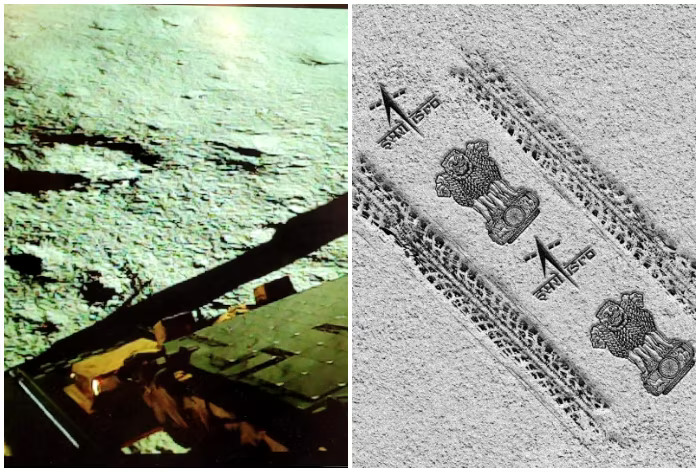
Chandrayaan-3: Pragyan rover leaves India’s imprint on lunar surface
text_fieldsChennai: India’s moon rover Pragyan, deployed via Chandrayaan-3, is now moving around the Moon’s surface with the logo of the Indian Space Research Organisation (ISRO) and the national emblem engraved on the wheels, leaving imprints of India’s remarkable achievement on the lunar soil, said a senior official of the Indian space agency.
India on Wednesday made history as ISRO’s third Moon mission Chandrayaan-3 successfully touched down on the lunar surface. The Lunar Module comprising the lander Vikram and the rover, made soft landing near Moon’s south polar region on Wednesday evening, making India the first country to land on the Moon's south pole and the fourth country to land on the Moon's surface.
“The rover rolled down onto the moon's surface from the lander sometime around 12.30 a.m. Thursday. It is moving around. It is leaving its imprint on the moon’s surface,” Dr. S. Unnikrishnan Nair, Director, of Vikram Sarabhai Space Centre (VSSC) said.
According to Unnikrishnan, the solar panels of the rover and that of the lander have been deployed and the rover will now collect samples of the moon, do the experiments, and send the data to the lander. India’s moon lander will in turn pass on the message to the Mission Operations Complex at ISRO Telemetry, Tracking and Command Network (ISTRAC), Bengaluru.
Queried whether the lander has landed at the planned site or was there any variation Unnikrishnan said as per the current data available, everything has gone as per plans.
“We have to do a post-flight assessment to know further,” he said.
The moon lander and the rover are part of the Rs 600 crore Chandrayaan-3 mission. The Chandrayaan-3 spacecraft comprises a propulsion module (weighing 2,148 kg), a lander (1,723.89 kg), and a rover (26 kg).
According to the Indian Space Research Organisation (ISRO), the moon rover has an Alpha Particle X-ray Spectrometer (APXS) and Laser Induced Breakdown Spectroscope (LIBS) for deriving the elemental composition in the vicinity of the landing site.
On its part, the lander will carry out the tasks assigned to it with its payloads: Chandra’s Surface Thermophysical Experiment (ChaSTE) to measure the thermal conductivity and temperature; an Instrument for Lunar Seismic Activity (ILSA) for measuring the seismicity around the landing site; Langmuir Probe (LP) to estimate the plasma density and its variations. A passive Laser Retroreflector Array from NASA is accommodated for lunar laser ranging studies.
The mission life of the lander and the rover is 1 Lunar day or 14 Earth days, ISRO said.
The propulsion module has a Spectro-polarimetry of Habitable Planet Earth (SHAPE) payload to study the spectral and Polari metric measurements of Earth from the lunar orbit. The life of the payload carried by the propulsion module post-ejection of the lander is between three and six months.
Meanwhile, in a tweet, ISRO said, “Chandrayaan-3 ROVER: Made in India Made for the MOON! The Ch-3 Rover ramped down from the Lander and India took a walk on the moon !”
With inputs from IANS











